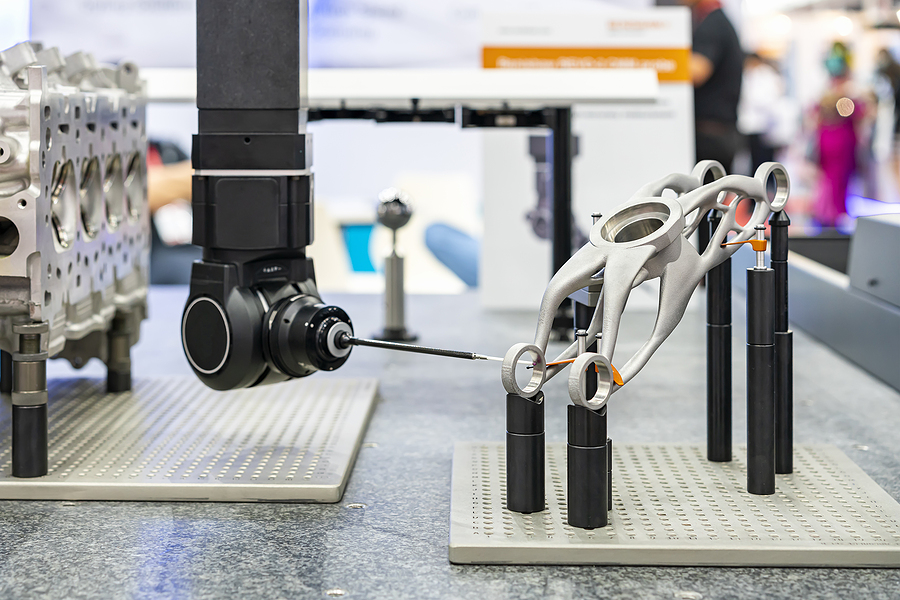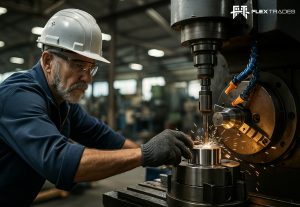In manufacturing, people often think that production volume is the top priority. That’s a mistake.
At FlexTrades, we know the truth: safety always comes first. And right behind that is quality — because without quality, production numbers don’t matter.
Critical to achieving consistent, measurable quality is a powerful piece of equipment: the CMM.
Let’s take a closer look at what CMMs are, how they work, and why they matter.
What Is a CMM?
CMM stands for Coordinate Measuring Machine. These machines are used to measure the physical dimensions and geometric characteristics of manufactured parts.
Yes, those same measurements can be done with precision hand tools. But manual inspection leaves room for error. People get tired. Vision blurs. Mistakes happen.
CMMs eliminate that guesswork by automating the inspection process. At a basic level, a CMM includes:
- A stable platform or table to position the part
- A probe that performs the measurements
- A computer program that guides and controls the probe’s path
But as simple as that sounds, there’s more going on under the hood.
CMM Programming: Where Precision Begins
CMMs are only as smart as the code that runs them.
CMM programming is a specialized form of machine instruction. Programmers create sequential sets of directions that tell the probe where to move, what to measure, and how to measure it.
Some parts only require a few basic measurements. Others have hundreds of features that must meet tight tolerances. Regardless of complexity, the program must be flawless — because CMMs can’t measure anything they haven’t been told to inspect.
CMM programming is done using software specifically designed for this task. If you’re not a programmer, it might look like a foreign language. But to a trained CMM programmer, it’s a tool for perfection.
What Does a CMM Programmer Do?
A CMM Programmer writes the detailed code required to inspect parts accurately and efficiently.
That includes:
- Mapping the inspection path
- Defining each feature and tolerance
- Ensuring alignment between design specifications and machine behavior
As machined parts become more complex — with intricate geometries and tighter tolerances — the job only gets harder. CMM programmers play a key role in maintaining quality and reducing waste across the entire production cycle.
Interested in Becoming a CMM Programmer?
If you’re looking to break into this field, start by exploring programs in Quality and Manufacturing Technologies. Many trade schools and technical colleges offer degrees or certificates in these areas.
Once you’ve got the education, hands-on experience is next. Common starting points include:
- CMM Operator
- Quality Inspector
- Machine Operator with inspection responsibilities
If you’re already in manufacturing, let your interest be known. Many CMM programmers start out on the floor and transition into programming roles through on-the-job training.
Already a CMM Programmer or Operator?
FlexTrades is hiring skilled professionals like you. Join our team and get access to:
- National travel opportunities
- Advanced technology and equipment
- Flexible schedules
- Industry-leading manufacturers
Apply here and take the next step in your career.








